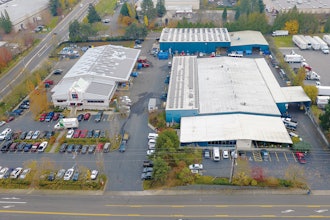Looking at the manufacturing industries as a whole, there is certainly notable progress being made with respect to operational efficiency and profitability. Even so, the required pace of responding to marketplace demands is accelerating, and will only continue to do so in the future requiring manufacturing organizations to optimize their people, processes, and technologies—what we refer to as a continuous journey towards Operational Excellence.
While automation, IT, and software solutions can play important part of many Operational Excellence initiatives and typically receive plenty of attention in Operational Excellence discussions, in reality technology can only be as effective as the people and processes to which it supports.
As decisions are still ultimately made by people on the shop floor, the top floor, and everywhere in between, the true foundation to driving Operational Excellence programs forward is built off effective leadership and the day to day actions of every employee. And just as there are a set of best practices around building effective processes and IT architectures, so too are there for building a responsive, efficient, and engaged workforce of employees that understand their roles, their particular goals, the enterprise goals, and how all of these aspects are connected and best achieved through the collection of everyone’s actions.
On September 23, 2014 at 10:00 am EST, LNS Research principal advisor Mark Davidson will kick-off the webinar “Leadership and Employee Engagement to Drive Operational Excellence,” the focus of which is to dive into the key strategies, training, and programs that increase employee engagement, align operational and financial goals and metrics, and improve performance through effective leadership and processes—all supported by technology.
Additionally, a case study of a global petroleum company’s Operational Excellence journey will be presented to illustrate the success of these methods by DuPont Sustainable Solutions Global Solutions Architect, William Menke. He will be followed by DuPont’s Global Practice Leader for Operational Excellence, Brian Rains - providing additional recommendations from the proven DuPont Bradley Model.
Recently, Manufacturing Business Technology’s editorial director, Jeff Reinke, sat down with Mark, William, and Brian to get a better idea of how leadership is linked to Operational Excellence, what types of topics and recommendations they’ll be covering in this webinar, and how attendees can best use this knowledge to support their current operational improvement initiatives. Below is an excerpt from the interviews:
Jeff Reinke: How are you seeing leading companies approach leadership in Operational Excellence initiatives? Are there some broad standards that are applicable across industries or do you see success as more of a case-by-case scenario depending on individual organization?
Mark Davidson: There are definitely some good operational process models that exist and are proven to build results over time. These include LEAN, Six-Sigma, and the various ISO models. However, in most cases we see companies pick and choose from 2-3 of these models to come up with their own custom combination that fits their industry needs and specific business improvement situation. The key thing that we have been finding, is that the leadership and employee engagement elements are often times not emphasized enough to make these initiatives successful. Irrespective of the chosen combination of improvement models, we see these people issues as the most challenging and underestimated aspects.
JR: Can you share a little about how this research was conducted and who participated?
MD: Gladly. This research was conducted using LNS Research’s social research model, which gives access to a particular research library for one year in exchange for manufacturing professionals taking their valuable time to provide us with their data and insights. We launched the Manufacturing Operations Management research survey in July, 2013 and the responses from over 500 participants have been included to date. Typical participant roles/titles include Vice Presidents and Directors of Operations, IT, Quality, Continuous Improvement or Supply Chain.
JR: What were some of the top strategic objectives identified for manufacturers today?
MD: The survey data clearly shows that top strategic objectives for manufacturing industries are all related to serving customers. First and foremost is ensuring consistency of quality for products produced at 66%, followed by timely order fulfillment at 56%, and then 49% focused on increasing production capacity and capabilities. The survey also indicated that there are many other strategic objectives that need to be simultaneously managed in order to have a successful business. These included the alignment of goals, getting new products to market more quickly, and meeting regulatory compliance.
JR: And what were the associated operational challenges for manufacturers today?
MD: At 26% of respondents, the top operational challenge is how to break down silos of organizations and departments and foster greater collaboration – so the people related issues are of universal concern. Companies that effectively address this challenge are in a much better position to deliver superior products and services, be responsive to customers, and be more efficient in doing so. At 25%, the next highest operational challenge is getting the required data and information out of the many disparate systems and databases that exist across plants and the enterprise. The ability to connect, federate, aggregate, and contextualize data from multiple sources into useful and timely information is a key capability that companies are looking for from IT and software solutions.
JR: And how are companies overcoming these challenges with an effective Operational Excellence strategy?
MD: Companies that are leading the way with their ability to effectively drive Operational Excellence in their production operations have aligned their people, processes, and supporting technology to do so. Experience has shown that it is critically important to address the leadership and people issues as a first priority. Once these issues are addressed, it facilitates the ability to build deeper organizational capabilities and use proven process methodologies to make continuous improvements. Only after this is in place, can the improvements be effectively supported by the appropriate enterprise and manufacturing software solutions to sustain and tune results. Our research show that companies that have all of these capabilities in place are 1.6X – 2.7X more capable of achieving their production management goals.
JR: Next, I’d like to ask a couple of related questions from DuPont Sustainable Solutions’ William Menke. William, what can you tell me about the business and operational challenges of your global Petrochemical client?
William Menke: The CEO and senior leadership of the company recognized that big competitive gaps existed when compared to world-class companies outside of their home market. Management had concerns about the condition of the assets and the ability of the organization to improve and sustain its performance. Additionally, they recognized the need to transform the organization from a holding company of largely independent entities with a disengaged workforce towards a single corporation with a recognizable, unifying culture and highly engaged employees.
JR: How did you lead this Petrochemical producer through the DuPont Production System model and process?
WM: The production system project began with an assessment to develop a holistic view of the company and its production capability through senior management interviews, data collection and performance analysis, site visits and direct observation, and stakeholder interviews. The combined project team identified opportunities for improvement and business priorities based on critical needs. At the early stage of the assessment, the focus was on identifying the areas for improvement, the critical factors involved and the business climate within the company, rather than the potential solution. Based on the assessment, the team agreed that the areas of focus would be cultural alignment through leadership development including effective mindsets and behaviors, the creation of standardized work using the new production system design and deployment, development of a continuous improvement culture to sustain progress, and performance management improvements utilizing KPIs with real-time visibility. The joint project team worked to ensure a balance between these areas of focus with the overarching goal of building ongoing internal capabilities to deploy and sustain a tailored new production system.
JR: And what kind of results is this company seeing at this stage in their Operational Excellence journey?
WM: Employees at all levels in the organization are now participating in idea generation, training, and the application of the best practices. Competency centers have been formed to help sustain performance in energy management, maintenance & reliability, and process control. The implementation of shop floor KPIs has directly affected $25M in benefits, operational results have improved 15-20% over two years at the involved sites, and the company has realized about $900M in financial benefits in four years—experiencing a positive ROI. Even more important for their future, positive culture changes are visible between line management and shop floor employees, thereby creating an environment of more openness and commitment to sustaining improvements.
JR: I have one final question for DuPont’s Global Practice Leader for Operational Excellence, Brian Rains. Brian, what are your final takeaway recommendations you’d give to those just embarking on their Operational Excellence journeys?
Brian Rains: A critical success factor is to pursue an integrated and balanced approach that engages the entire organization: the people, process and technical areas. This approach needs to place emphasis on leadership and employee engagement issues, in order to ensure a productive and smooth Operational Excellence journey through the creation of an aligned and productive work culture. This creates the foundation for future success. Next, ensure you are taking a step-by-step implementation and roll-out approach, whereby additional process improvements can be built upon previous efforts. Remember that you are building a combination of processes, capabilities, mindsets and behaviors in order to create a platform for sustainable business improvements.
Registration for the webinar associated with this content can be found here.






















